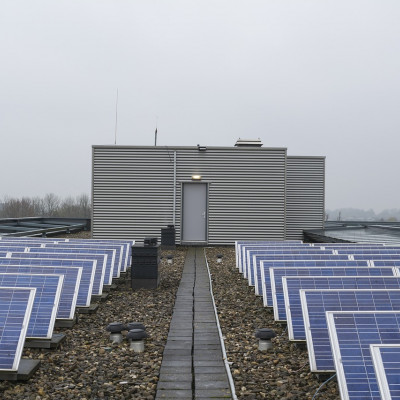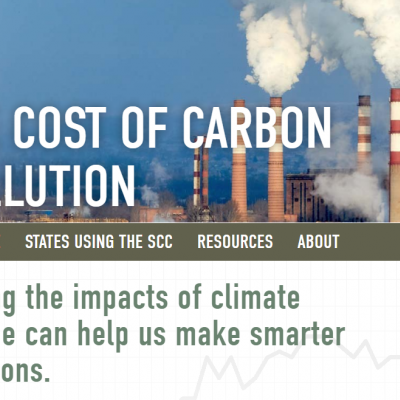September 30, 2018
September 2018 at Policy Integrity
- 10th Anniversary Conference, Global Climate Action Summit
- New Cost of Carbon Website
- Encouraging Royalty Policy Changes from the Interior Department
- New Policy Proceedings: Energy Storage and Emissions
- In the News: Revesz, Lienke, and Livermore Share Perspectives on Regulatory Policy
- Colorado, Virginia, Vermont, and California Energy Policy Comments
-

10th Anniversary Conference, Global Climate Action Summit
To celebrate Policy Integrity’s 10th anniversary, we recently hosted a conference, Energy and Environmental Policy: The Quest for Rationality. The event included keynote speeches from Gina McCarthy and Cass Sunstein, as well as three panel discussions covering energy, environmental, and natural resources policy. E&E News and Law 360 covered the conference. Video of the panels and keynotes is available here.
As part of the Global Climate Action Summit in San Francisco, we hosted a panel discussion on how countries, states, and companies are using climate damage estimates to inform their decisionmaking. Video of the panel is available here.
-
New Cost of Carbon Website
Costofcarbon.org is now home to our ongoing work on the Social Cost of Carbon (SCC) in U.S. state policy. The site tracks news and policy developments, and offers resources for policymakers and advocates, including an easy-to-navigate version of our FAQ Guide on the SCC, information on state-specific use of the SCC, and other helpful resources. The domain, which had housed our SCC-focused research, has been refocused to reflect the most important recent developments in the application of the SCC in decisionmaking.
-

Encouraging Royalty Policy Changes from the Interior Department
Our September joint letter to the Interior Department encourages the Royalty Policy Committee (RPC) to establish royalty rates that account for the full costs of fossil fuel production. As we’ve discussed in past papers and comments, federal land leasing practices often fail to properly consider the costs of greenhouse gas emissions, the fair market value of energy products, and other factors that affect the public. The letter, co-signed by the Natural Resources Defense Council, the Sierra Club, and experts from the Montana Department of Revenue and the Center for American Progress, urges the RPC to make mineral leasing and royalty systems more competitive, transparent, and rational.
-

New Policy Proceedings: Energy Storage and Emissions
The New York State Energy Roadmap outlines a series of approaches to achieve governor Cuomo’s 2025 statewide energy storage target, and we recently submitted two sets of comments on the proposal. We generally support this plan to reward energy storage systems for the values they provide and improve price signals. In a set of joint comments that we submitted with a diverse group of stakeholders, we suggest improvements to the state’s compensation formula for environmental benefits.
California is exploring changes to its Self-Generation Incentive Program (SGIP), which tries to encourage the adoption of certain distributed energy resources. Our comments urge the California PUC to adopt the recommendations in its staff report, which would help the program better deliver on its key goal of reducing GHG emissions. We recommend that the PUC adopt a GHG emissions performance-based incentive structure for new projects, and include real-time GHG emissions signals for energy storage operation.
-

In the News: Revesz, Lienke, and Livermore Share Perspectives on Regulatory Policy
In an op-ed for The Hill, Richard Revesz and Jack Lienke trace the flawed history and grave implications of EPA’s Affordable Clean Energy (ACE) proposal. They explain how it is a “warmed-over policy from the George W. Bush years” that, contrary to its purported goal, might increase energy-sector CO2 emissions. In another op-ed, Revesz highlights shocking facts from EPA’s own analysis of the ACE proposal: the agency admits that the policy change will lead to thousands of deaths, and that other options with better outcomes would have been statutorily permissible.
Revesz also took part in an event at the George Washington University Regulatory Studies Center, speaking on a panel that included current OIRA administrator Neomi Rao. “If we want to preserve cost-benefit analysis for the future,” Revesz said, “we need to be clear about the significant affronts that have taken place over the last 20 months and fight to protect cost-benefit analysis from the deregulatory forces that are running over it.”
Michael Livermore’s op-ed in The Regulatory Review makes clear that tainted review and a disregard of cost-benefit analysis are at the root of the Trump Administration’s hostility towards environmental regulations. “For the time being,” he writes, “the likelihood of a reasoned, balanced, and legitimate approach to reforming cost-benefit analysis at [EPA] seems so remote as to be almost unimaginable.”
-

Colorado, Virginia, Vermont, and California Energy Policy Comments
In comments on several state energy proceedings, we encourage decisionmakers to fully consider the costs and benefits of energy production, grid resilience, and emissions standards.
We submitted comments to the Colorado Public Utilities Commission as it reviews its rules on electric resource planning. Our recommendations focus on the state’s need to internalize greenhouse gas externalities, which we suggest be monetized using the Social Cost of Carbon. In comments to the Virginia State Corporation Commission, we also recommend that Integrated Resource Planning submissions should be required to monetize greenhouse gas impacts with the Social Cost of Carbon.
We also submitted comments on Vermont’s standard offer program, which is designed to reward generators that relieve transmission constraints. We urge the Vermont PUC to take a broader view of benefits to grid operation, and include resilience benefits and the avoidance of climate effects on the grid.
Our comments to the California Air Resources Board address its proposal to ensure that vehicle emissions continue to meet current standards and are not affected by federal regulatory weakening in the coming years. We affirm the feasibility of California’s emissions standards and suggest that CARB update its analysis to account for the latest proposals from federal agencies.

